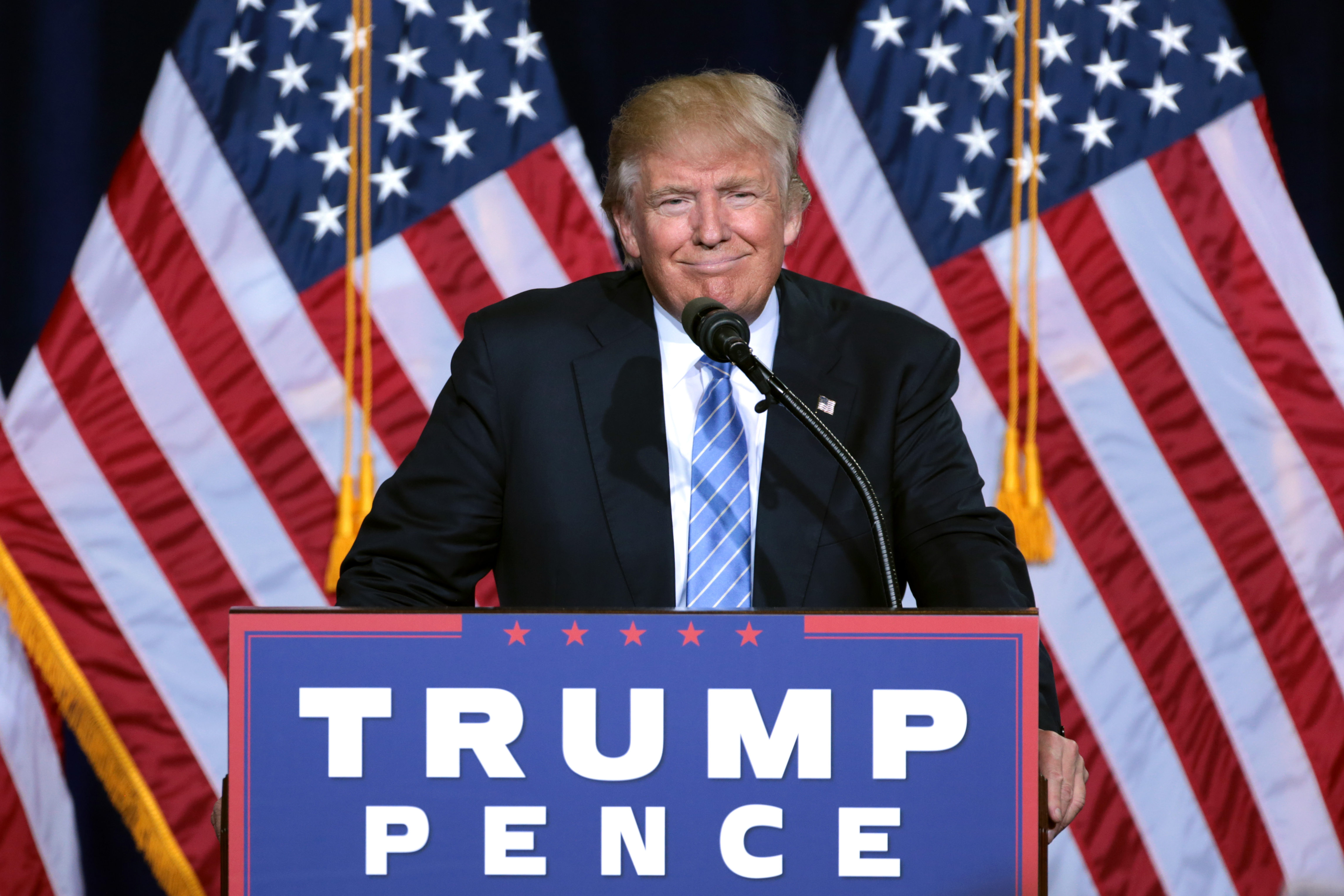
In the days since being elected President, Donald J. Trump has made several controversial appointments to top government posts, prompting fear and outrage on college campuses and beyond.
Students at Boston-area colleges - including Harvard and MIT - protested the appointment of leading contrarian of global warming and spokesperson for the fossil fuel industry Myron Ebell to the Environmental Protection Agency transition team.
These appointments and other rhetoric on the campaign trail have left some students and academics feeling uncertain about their fields of study and work.
During his first lecture after last week’s election of Donald J. Trump, Boston University Professor of Earth and Environment Cutler Cleveland was asked: Did I choose the wrong major?
In the letter below, Cutler attempts to answer his student’s question.
Dear Caitlin (and all my other students),
I bumbled my response to your question “Did I choose the wrong major?” Here is a more thoughtful reply.
Dismal scenarios are plausible: federal climate action disappears; clean air and water regulations are reversed, de-funded, or not enforced; key ecosystem services lose protection; sensitive federal lands are opened for the extraction of energy, minerals, and timber, and so on. I suggest that you transform the specter of such changes into motivation, and that you bear in mind several countervailing and affirming observations.
1. The president is not the federal government, the federal government is not all government, and government is not the only agent of change.
Let's start on the home front. Over the past decade, Boston University has committed substantial resources to improving the energy and material efficiency of its campuses. We use less polluting fuels, recycle more of our potential solid wastes, and support more sustainable food production systems. The Board of Trustees and President Brown have committed the University to develop a response to climate change that will be incorporated in the University’s strategic plan.
Bump it up level. The city of Boston has joined a growing number of cities around the world by committing to an 80 percent reduction in greenhouse gas emissions by 2050. The Institute for Sustainable Energy at Boston University is a lead partner with the City in this endeavor. Bump it up another level. When California says “jump” about emissions reductions and fuel efficiency, carmakers in the US and Japan say “how high”? California and New York have large populations and therefore are home to a large fraction of all cars, microwaves, boilers, furnaces, light bulbs, dishwashers, air conditioners, and other energy-consuming devices. Their policies drive policies in other states and drive technical innovation in the manufacture and use of those devices. And while we are at the state level, consider this: in last Tuesday’s election, nearly every ballot initiative in support of clean energy and waste reduction passed: e.g., alternative fuel vehicles in Washington, consumer choice in electricity provider in Nevada, rooftop PV in Florida, and reduced use of plastic bags in California.
Bump it up one more level. In the Regional Greenhouse Gas Initiative (RGGI), nine eastern and New England states have committed to a regional cap in CO2 emissions that declines 2.5 percent per year through 2020. Revenue from that program’s auction is recycled back to the states to fund strategic clean energy and consumer programs that provide benefits and improvements to private homes, local businesses, low-income housing, industrial facilities, community buildings, and retail customers. Check out these impressive success stories. Now let's step outside government. Civil society is a potent agent of change. Philanthropies, faith-based groups, consumer advocates, environmental justice advocates, indigenous peoples movements, youth groups, charities, and other NGOs of every stripe are important promoters of clean energy and the sustainable use of the planet’s natural systems. I am sure they will continue their work. In fact, I suspect that the 2016 election will be fuel for their fires. Business is the third important driver of change. Reduced federal support for sustainable business practices, and the backsliding that will occur in many existing policies, will provide cover for companies who place short term profits over long term social well-being. But many other companies have fundamentally transformed the way they produce goods and services and the way they approach strategic decision-making. This view of business has been “baked” into the nature and structure of many firms, so they are unlikely, for example, to go back and rip out clean systems of production and replace them with the old, dirty systems just because the federal incentive structure has changed.
2. The genie is out of the bottle in regards to clean energy and energy efficiency.
Solar and wind account for 63 percent of the planned additions to electric generating capacity in the U.S. in 2016. Read that last sentence again. Close to zero for coal. Ditto for the past few years. So you can reject the legitimacy of claims that new coal jobs can be generated, and, more generally, that demand for renewables will be choked off. New federal policies that support coal, even if enacted, will be no match for the power of the market. Due to technical innovation, the cost of electricity from wind and solar sources has plummeted at a breathtaking pace (note that some of that R&D, especially for solar PV, has come from federal funding or has been performed in a federal national lab). Onshore wind—even without subsidies—is competitive with new natural gas facilities, and it is cheaper than coal. In addition, we have abundant natural gas resources that currently cost about the same as coal, and combined cycle gas power plants are at least 25% more efficient than coal plants. There is no economic incentive to build a new coal plant. Smart money knows this, and it anticipates that, current election cycles aside, energy markets soon will be forced to reckon with climate change mitigation to a much deeper extent than they are today. The transition to an energy-efficient, low-carbon world is real and permanent. Federal policy can slow the transition but it cannot reverse it.
3. Climate Change
You are likely to be frustrated by federal (in)action on climate change. The U.S may pull out of the Paris Climate Agreement, and even if it doesn’t, it could ignore its obligations under the Agreement. This would have a variety of undesirable outcomes, such as incentivizing other countries to pull back. Even if the Clean Power Plan survives its trip through the courts, it too is on the chopping block. Ditto for regulation of fugitive methane emissions. But other powerful forces are also at work. The quantity of energy required to produce a dollar of GDP, and the quantity of greenhouse gases released in the production of that dollar of GDP, have both decreased by more than 50 percent since 1980. Federal policies that encouraged those improvements (e.g.,vehicle efficiency standards) will be in the cross hairs. But the aforementioned forces in energy markets, civil society, and the business sector, as well as structural changes in the economy, have been the largest drivers of energy efficiency and decarbonization. This momentum can be slowed but not reversed by decisions made in Washington. On the homefront, Boston University reduced its emission of greenhouse gases by 25 percent from 2006 to 2014 due in part to investment in cleaner fuels and more efficient use of energy.
When I coached youth lacrosse, the kids sometimes came off the field after a loss complaining about “bad” refereeing, “mistakes” made by their teammates, the “jerks” on the other team, field conditions, etc. I would say, OK, you have 5 minutes to vent. Then you zip it, move on, and focus on what you can do improve your own contribution to the team’s performance in the next practice and game. Focus on what you can control: your own behavior.
My advice is to view the 2016 election as opportunity to double-down on the commitment you have made. The forces described above will generate opportunities for a rewarding career in your field. You also have chosen a path that provides an opportunity to find a calling in life in which you give back more than you take. Go for it.
Best regards,
Professor Cleveland
P.S. Please remember to label the axes of your graphs on your next exam. :)










